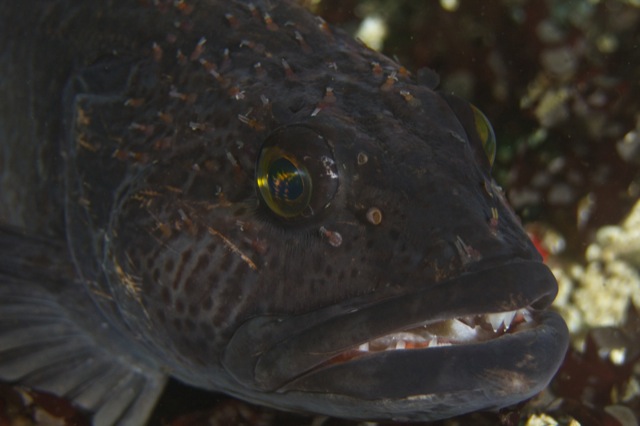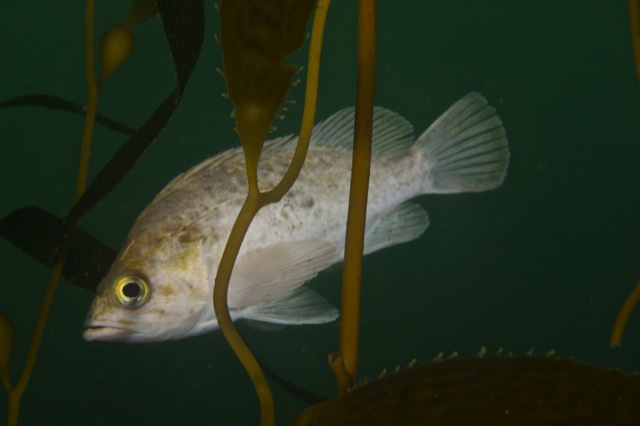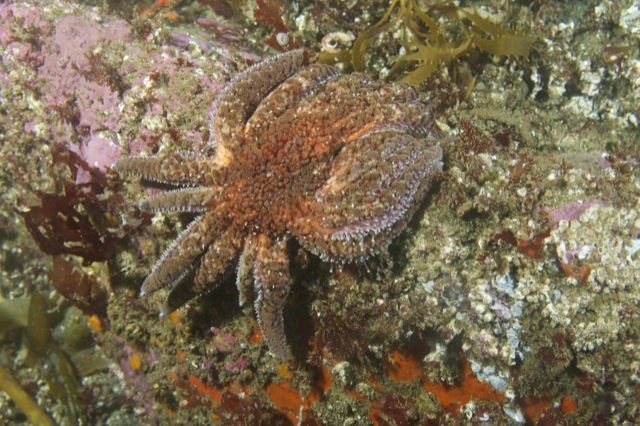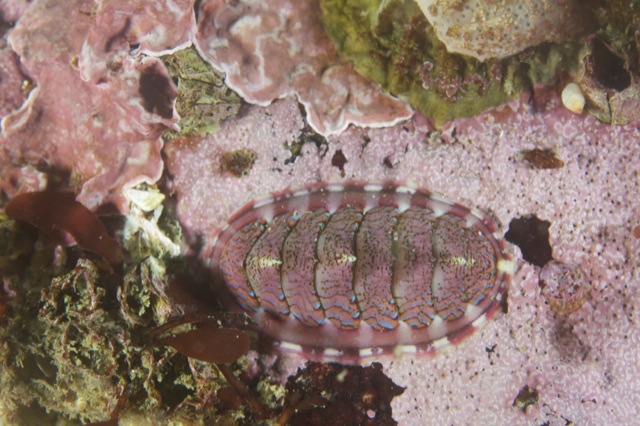By Scott Gabara
It is amazing how many different ways organisms can survive in the ocean. One of the most interesting is the many different strategies to try to get food from the water (filled with phytoplankton, zooplankton and detritus (particles of decaying algae and animal material)), from larger algae growing on the bottom, or from the organisms that consume these sources.
We see Kelp Rockfish associating with, surprise...kelp! They eat different crustaceans on the kelp and even eat small year-old rockfish.
 This impressive Lingcod is a predator around the kelp forest, they eat invertebrates like squid and crustaceans and many different fishes.
This impressive Lingcod is a predator around the kelp forest, they eat invertebrates like squid and crustaceans and many different fishes.
This Fish-eating Anemone eats crustaceans and fishes. It would not be pleasant to be captured by one of these and digested slowly!
This Sunflower Star is a surprisingly fast moving predator in the kelp forest. They, like other seastars, extrude their stomach and digest their prey using acids, another not-so-fun way to be eaten.
This beautiful Kelp Greenling male eats different invertebrates and even fishes when they become available.
This lined chiton moves along the bottom scraping the surface, getting foods like coralline algae, detritus (decaying algal and animal material), attached invertebrates, diatoms (algae), red algae, and green algae.
These species are just a preview of what we see each dive around the Monterey Bay area. I am grateful people before us have studied these organisms so we are able to construct food webs to try to understand how all of this diversity we see interacts over time and space.






